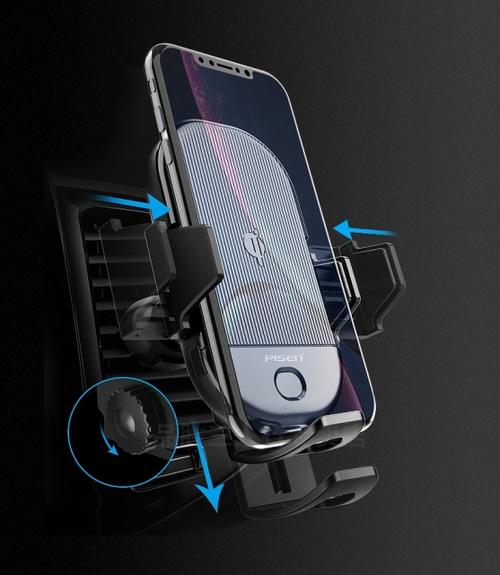
Anti-theft equipment for your vehicle is a great investment to protect your personal and valuable items. These systems can protect your property in many ways. They include locks, RFID tags and GPS locators. To learn more about the benefits of anti-theft systems, read on! Here are some of the benefits:
Locks for steering wheel
A steering wheel lock is a security device installed on the steering column of a vehicle. These products are often brightly colored, which makes them easy to spot and deter thieves. The bars on these steering wheel locks are made of durable steel and are difficult to cut, saw, or pry. The bars provide more security and peace of thought for your vehicle. The device is compatible with all types of steering wheels.

The main difference between steering wheel locks and other types of steering wheel locks is the type of locking mechanism used. Many steering wheels locks use a key system. This can prove problematic if your car keys are lost. You will be able use the steering-wheel lock without having to break the wheel if the installation is done correctly. Steering wheel locks have another advantage: they increase visibility of your car. Steering wheel locks can be used to deter thieves. This will make it harder for them to steal your car and make it less appealing.
Tire locks
A tire lock is a great way to stop vehicles being stolen. They work by locking the car's wheels, making it impossible for them not to spin. These clamps are usually made of heavy-duty steel and fit over the wheels. These clamps are harder to find and easier to see. These clamps come with two keys so it might take some practice to put them in. A tire lock can also help protect the steering wheel, which is a common place thieves will attempt to access your vehicle.
Other tire locks may be used as anti-theft devices. These are similar and can be used as anti-theft devices. It may also prevent the theft of engine parts. These are small, inexpensive devices that attach to your tire valve stem and stop the vehicle from moving. The police use these locks to immobilize cars parked in illegal spaces, but they can also work as an anti-theft device.
Passive anti-theft system
You can find a local dealer that will provide you with a solution to your car's theft prevention. Passive anti-theft systems work by using a radio-frequency transponder embedded in the ignition key to recognize when the car is being opened by unauthorized people. The transponder can then be read by the ignition lock, so the vehicle cannot even be driven. This system is available on many Ford models.

Passive antitheft system require driver involvement in arming the car. They require that the driver activate the button on the key/remote to arm the system. This leaves the car vulnerable to theft. Active anti theft systems arm the vehicle automatically. Many anti-theft system can switch between active or passive modes depending upon the model and features. An anti-theft system that is passive is not the best for everyone.
FAQ
Is being a mechanic apprentice hard?
Although it's not an easy task, you will learn quickly and have many opportunities to advance.
You need to have patience and perseverance. It is also important to know how you can fix vehicles, trucks, or motorcycles.
Customers and family members will put pressure on your shoulders to help you succeed. But, you shouldn’t be pressured to make any decisions you aren’t happy with.
If you enjoy fixing cars, it could be a great career choice. It's a job where you can earn a decent salary and build up your business.
Perhaps you prefer a different route. Consider becoming a technician.
This involves using your technical expertise to support other workers. You could help technicians troubleshoot problems or teach them new techniques.
Another option is to become a service advisor. As a service advisor, you will provide assistance and advice to customers as they bring their car to a garage.
The decision you make will depend on what you are looking for. There are many choices available and you can choose what suits you best.
Are you looking for a career as an automotive mechanic?
For those who are passionate about excellence, automotive is a rewarding industry. Working hard and learning from others is the best way to be successful in this field.
Because you will be spending most of your time communicating with customers and employees, you will need excellent communication skills. It is important that you are willing to travel, work long hours and be able to commute.
You can take classes at universities and community colleges if you are interested in a career as an automotive technician. Many schools offer programs specific to students interested in sales, auto repair, or customer service.
Mechanical engineering should be your first choice for a degree. You can earn a bachelor's in as little four years.
Many employers will hire graduates straight out from school. It's a smart idea to begin looking for work while you have the opportunity to study part-time.
After you've finished your education, it's likely that you'll need to go through some training before you can be hired as an auto technician.
This means that you must pass the Automotive Service Excellence exam. This test covers topics including engine maintenance, brakes, steering systems, suspension, and more.
Once you have passed the ASE Test, you are eligible to apply for a National Institute for Automotive Service Excellence License.
You can perform repairs on private cars by obtaining a license. You will be compensated based on how many services you performed.
It is important to remember that not all states require licensing. If you intend to work in another state, however, you will need a license.
Some states don’t issue licenses until a certain amount has been completed. If this applies to you, then you may need to find another option.
How can I fix my automobile as a hobby.
It's a great hobby to take on if you are passionate about cars. You can repair them, buy their parts, sell them, or just have fun with them. This would be a wonderful hobby if you're looking to find something completely different.
It's difficult to make this a fulltime job. This requires dedication and hard work. You'll also need to invest a lot.
It is best to avoid getting involved in car accidents unless you have good reasons.
How can I prepare for a apprenticeship as a mechanic?
It is essential to understand what you are getting into. You need to understand the mechanics of cars and how they work. You will be able to know exactly where to begin when you arrive at the garage for your first day.
You should also know how to fix common problems such as tires or broken lights.
These lessons will help you to identify and fix problems.
You'll also need to know how different parts fit together to put them back together again.
Finally, be proficient in using tools safely and efficiently.
These are all things that will make you a competent mechanic.
What's the difference between a mechanic and an automotive technician?
Although they may be similar, they are not identical. An automotive technician maintains cars, while a mechanic repairs them.
A mechanic must have good manual dexterity and be able to perform simple tasks quickly. They should also be able correctly diagnose and repair any problems.
An automotive technician needs to be more technically skilled than a mechanic. They need to be able use tools such drills and wrenches, and read blueprints.
They should be able safely to perform complex procedures. They need to be familiar with various types of engines and electrical system.
They must also be capable of understanding how parts interact.
As a result, a mechanic usually earns less money than an automotive technician. There are many job opportunities in both.
Statistics
- Apprentice mechanics earn significantly less hourly than mechanics who have completed training, with a median wage of approximately $14.50 an hour, according to PayScale. (jobhero.com)
- 52% of Mechanics in the United States think their salaries are enough for the cost of living in their area. (indeed.com)
- According to the BLS, total auto technician employment is expected to exceed 705,000 by 2030. (uti.edu)
External Links
How To
How to correctly diagnose your vehicle for repairs
The symptoms of your vehicle are the first thing you need to look at in order to determine whether it is in dire need of repairs. Then, follow these steps to diagnose your vehicle properly.
-
Check engine lights. Inspect the dashboard light indicators. These include the engine lights, the oil pressure gauge and the battery light indicators. The RPM gauge and coolant temperature gauge should also be checked. It could indicate that your vehicle is having problems.
-
Take a look at the treads. Tires with worn treads could cause problems when handling or braking. It is also important to inspect the wheel treads. You should ensure that they are clean and smooth. This can be done by removing the wheels from the vehicle and taking them off. To check the condition of your treads, use a flashlight.
-
Pay attention to the level of your brake fluid. You must keep track on the level of brake fluid in your vehicle. This will ensure that your brakes run smoothly. Your brakes may fail if the brake fluid level drops.
-
Check the suspension system. Vehicles usually have a suspension system that helps absorb shocks and vibrations while driving. It improves control and allows for smoother accelerations or decelerations. It might feel uncontrollable or wobbly if your vehicle is suffering from a suspension problem. Try putting some weight on your front or rear axle to determine if you have a suspension problem.
-
Examine the steering column. The steering columns are what connect the steering knob to the rest. Sometimes, steering columns are damaged by accidents. You should replace your steering column if it feels loose or unstable.
-
Observe the exhaust pipe. The exhaust pipes are responsible for moving gases from the combustion chamber into the atmosphere. Exhaust pipes that are cracked or leaking can allow harmful fumes to enter your cabin. Also, if your tailpipe is bent, you should fix it immediately.
-
Look under the hood. To check for unusualities, look under the hood. Your engine could be leaking fluids. A professional technician should be contacted if your engine compartment emits an unusual smell.
-
Make sure to check the air filter. The outside environment can collect dust and other debris in your vehicle's air filters. A dirty filter can lead to a poor vehicle's performance. Replace your air filter regularly.
-
Make sure you check the fan belt. The fan belt is the link between the engine and the transmission. If the fan belt is damaged, the engine won’t turn. It's easy to replace the belt. You only need a screwdriver or pliers to replace your belt.
-
The radiator hose and hoses should be checked. The radiator hose transports water from radiator to engine. It can cause hot liquid to leak onto the engine if it is damaged or cracked. Repairing the hose is easy with a pair of needlenose pliers or a small wire brush.
-
Make sure you have the windshield wipers checked. Windshield wipers use electricity to wipe away rain and snow. If they stop functioning, they can leave streaks in your window glass. The solution is to change the washer fluid.
-
The battery cables should be checked. The battery cables provide power for the electrical systems in your car. If you are replacing batteries, disconnect the negative cord first. Failure to do so can damage your alternator.
-
Check the headlights. Headlights illuminate the road ahead of you. If they don't work properly, it can cause poor visibility. To check if the bulbs have gone out, you can inspect them.
-
Make sure you have your lights on. Lights warn other drivers when you approach them at night. You may be distracted by the light and end up in an accident.
-
Inspect your brakes. Brakes will reduce the speed of your car in case of an accident. If your brakes aren't working properly, you may lose control and crash into other cars.
-
Change your oil. Keep your engine lubricated with oil. This oil helps to prevent metal parts becoming too worn out. It is recommended to change the oil once a month.